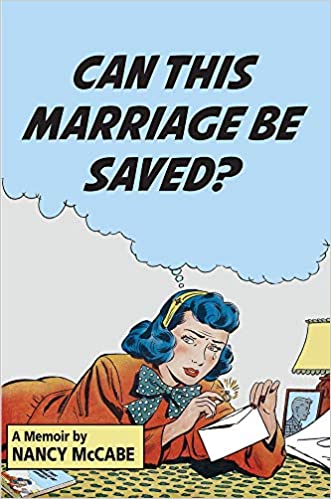Ludonarrative Dissonance: Glitches in the System
“[S]tories are about characters and the most interesting stories are often told with dissonant characters; as it is the surprise, the disturbance, the accident, the sacrosanct disruptive element, that justifies the very act of telling a story.” (Ludonarrative Dissonance: Is Storytelling About Reaching Harmony?)
In 2007, Kevin Levine and 2K Boston released the smash hit video game hit BioShock. It was at the time the fastest demo to reach one million downloads on xBox. IGN described it as “[A] monolithic example of the convergence of entertaining gameplay and an irresistibly sinister, engrossing storyline that encompasses a host of multifaceted characters.” GamesRadar said, “BioShock‘s story is the best we’ve witnessed on the Xbox 360 to date. … The same holds true for gameplay, which runs even deeper than the narrative.”
The story behind BioShock is one immersed in moral quandary and Randian Objectivism. It is a first person shooter — action- and detail-oriented. Players are led to consider the aspects of Randian rational self-interest through the narrative. The gameplay is designed to test these ideals, allowing players to make choices throughout the game to abide by the ideals or reject them. This combination of complex narrative and surprising gameplay was meant to make BioShock highly immersive and incentivize gamers to stay interested in playing longer. However, there was a problem: the action of the game directly conflicted with its narrative.
The Atlas Society wrote: “[W]hen the player encounters a Little Sister, he’s faced with an initial choice: attack and kill the little girl’s only protection in a dangerous world and then—and only then—deal with the child. There is no option to trade, to reason, or to cooperate. The only choice is to use force. That’s not a moral choice. It’s a moral vacuum.”
A game designer named Clint Hocking leveled the most enduring critique of BioShock the same year it released:
“To cut straight to the heart of it, Bioshock seems to suffer from a powerful dissonance between what it is about as a game, and what it is about as a story. By throwing the narrative and ludic elements of the work into opposition, the game seems to openly mock the player for having believed in the fiction of the game at all. The leveraging of the game’s narrative structure against its ludic structure all but destroys the player’s ability to feel connected to either, forcing the player to either abandon the game in protest (which I almost did) or simply accept that the game cannot be enjoyed as both a game and a story, and to then finish it for the mere sake of finishing it.”
Clint Hocking, “Ludonarrative Dissonance in Bioshock: The Problem of What the Game is About”
In this article, Hocking coined the term “Ludonarrative Dissonance” to describe inconsistencies between the narrative and gameplay (aka, “ludic elements”) of a video game. It was a way to describe the detachment gamers felt in what was supposed to be an immersive experience. Hocking’s critique was heard throughout the game design world and developers for a while attempted to purge their work of all dissonance — anything that would pull people’s minds out of the game.
Nick Ballantyne (2015) wrote, “The best films, novels, and video games are all logically internally consistent. If that logic is ever broken, like if Archer was suddenly a Raptor, it can be quite jarring and break the audience’s suspension of disbelief. In a video game, this is doubly so since both the mechanics and narrative need to be logically consistent with each other. Having both the ludic and narrative structures gel is key to inducing a state of flow and maintaining immersion.”
Ballantyne compares Ludonarrative Dissonance to cognitive dissonance. “When confronted with cognitive dissonance (i.e., our beliefs and actions not lining up) in our boring everyday lives, people can cope in a few ways. If someone’s actions conflict with their beliefs, they can change their beliefs, change their actions, or just ignore it. … These are all valid ways of alleviating cognitive dissonance, but ludonarrative dissonance isn’t about your beliefs, it’s about the system’s imposed beliefs.”
Stories Hampered By Our Own Minds
“Humans have always used stories to make sense out of our chaotic world. When our ancestors had to kill animals they felt were kindred spirits to survive, they created myths to help them come to terms with it. When they invented agriculture, they created myths that glorified graft and highlighted the seasonal nature of existence. When they began to settle, humans created myths imbuing cities with transcendence.”
Ella Saltmarshe, “Using Story to Change Systems“
Narrative is a powerful tool. With it we can communicate and justify any information (or disinformation) and action (or inaction) in emotional and personal terms. Give a group a slogan and its ability to unite and be recognized and heard is exponentially amplified. But only for a time; a slogan could never represent the full complexity of a creed or goal and even the cleverest of slogans soon becomes cliche, scripted, dead to listeners.
The stories we choose to tell about what we see around us affects our norms and can make our personal and cultural biases seem inevitable. We are limited to our own viewpoint, yet we are mostly unaware that our viewpoint is limited. Our brains are efficient processors and our instinct to interpret information quickly has allowed us to come this far. But the unintentional side effect of this speed is confirmation bias – it’s easier to choose and remember information that already aligns with our expectations.
“People give special treatment to information that supports their personal beliefs. In studies examining the my-side bias, people were able to generate and remember more reasons supporting their side of a controversial issue than the opposing side. Only when a researcher directly asked people to generate arguments against their own beliefs were they able to do so. It is not that people are incapable of generating arguments that are counter to their beliefs but, rather, people are not motivated to do so.”
Britannica, “Confirmation Bias“
Confirmation bias is exceedingly more comfortable than cognitive dissonance. When prevailing narratives-of-the-day present false dichotomies, it is easier to align with a camp rather than deal with the disconcerting effort of balancing two conflicting notions. Especially in times of crisis, where there is no clear moral roadmap, people will reach for the narratives that they believe will land them “on the right side of history” rather than increasing their scrutiny of their own view of history.
When narrative serves only to confirm entrenched preconceptions, audiences disengage. Further, when the system’s imposed beliefs preclude an individual from combating moral ambiguity in an “acceptable” way and, instead, present only options that deny the individual’s agency, that individual has no reason to engage in the system at all. As in the BioShock game, if a player sees that the narrative and action are in conflict they will not experience immersion; they will not feel at home in the system.
Purposeful Dissonance: The Key to Immersion
In writing, as well as game development, there is a tendency to rid the system of dissonance, to create a world where the audience is never shocked out of the narrative because it is seamlessly congruent with the action. The idea is that when dissonance is eliminated then peace and harmony can reign.
Back to Ballantyne: “Games construct a set of beliefs through the mechanics and the story by reinforcing actions in line with intended behaviour. If we complete objectives, the story moves forward, and we get rewarded through the mechanics (like money or points). These reward systems construct a system of beliefs within the game, like whether killing aliens is good or eating zombies is fantastic.”
But when a goal of attaining peace means avoiding any form of ideological conflict, then what we are actually looking for is silence from non-conformers. We are looking to eliminate outliers and minority voices. In a search for middle ground, agency and representation are given to the majority but denied to the individual. A story that is perfectly harmonious in this way then becomes uninteresting, disengaging, benign.
In his article Ballantyne is not arguing against ludonarrative dissonance; in fact, he’s calling for it. “Video games can force players into uncomfortable situations, and ludonarrative dissonance can help foster that uncomfortableness. … If your intent is to unsettle or confuse a player, then ludonarrative dissonance seems perfect, but this relies heavily on the player.”
Engaging and engrossing writing can be simple or complicated, but never flat. Just as in real life, we can incorporate adversity and differences, rather than avoid them, in order to build a system that feels real and moves our readers. Even when our goal is to find patterns, draw conclusions or describe a beautiful future, our stories are more powerful when we consider the exceptions to the rules we create. Introducing dissonance into our writing invites our readers to bring themselves into the story and empowers them to take our narratives personally.
“For Ballantyne, “if we are not given the allowance to change our play-style or ignore the contradictions, we’re only left to justify the dissonance”, still in his own words, it “might not be the worst thing in the world to […] be forced to think why it’s there.”
Frederic Seraphine, “Ludonarrative Dissonance: Is Storytelling About Reaching Harmony?“




